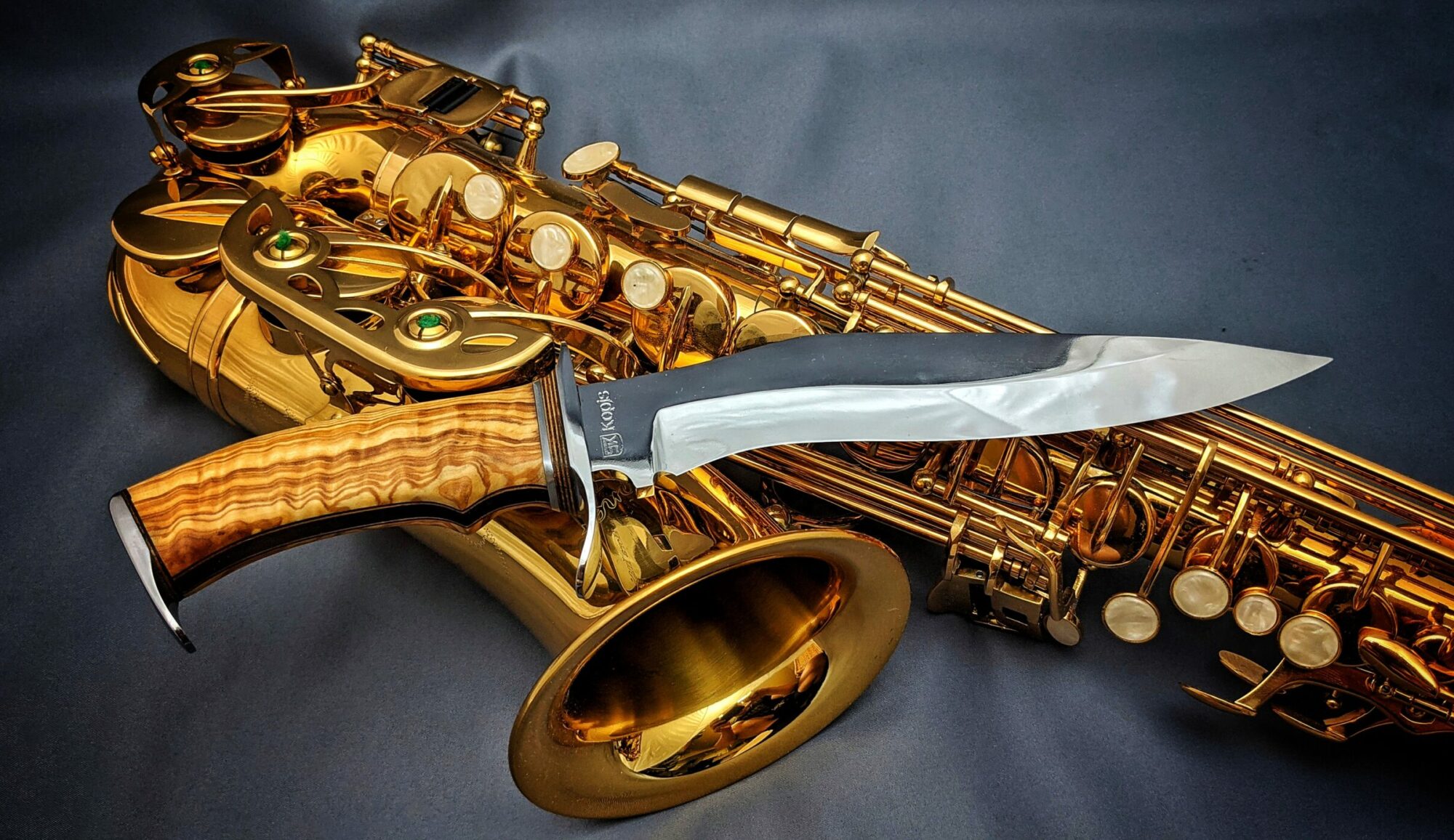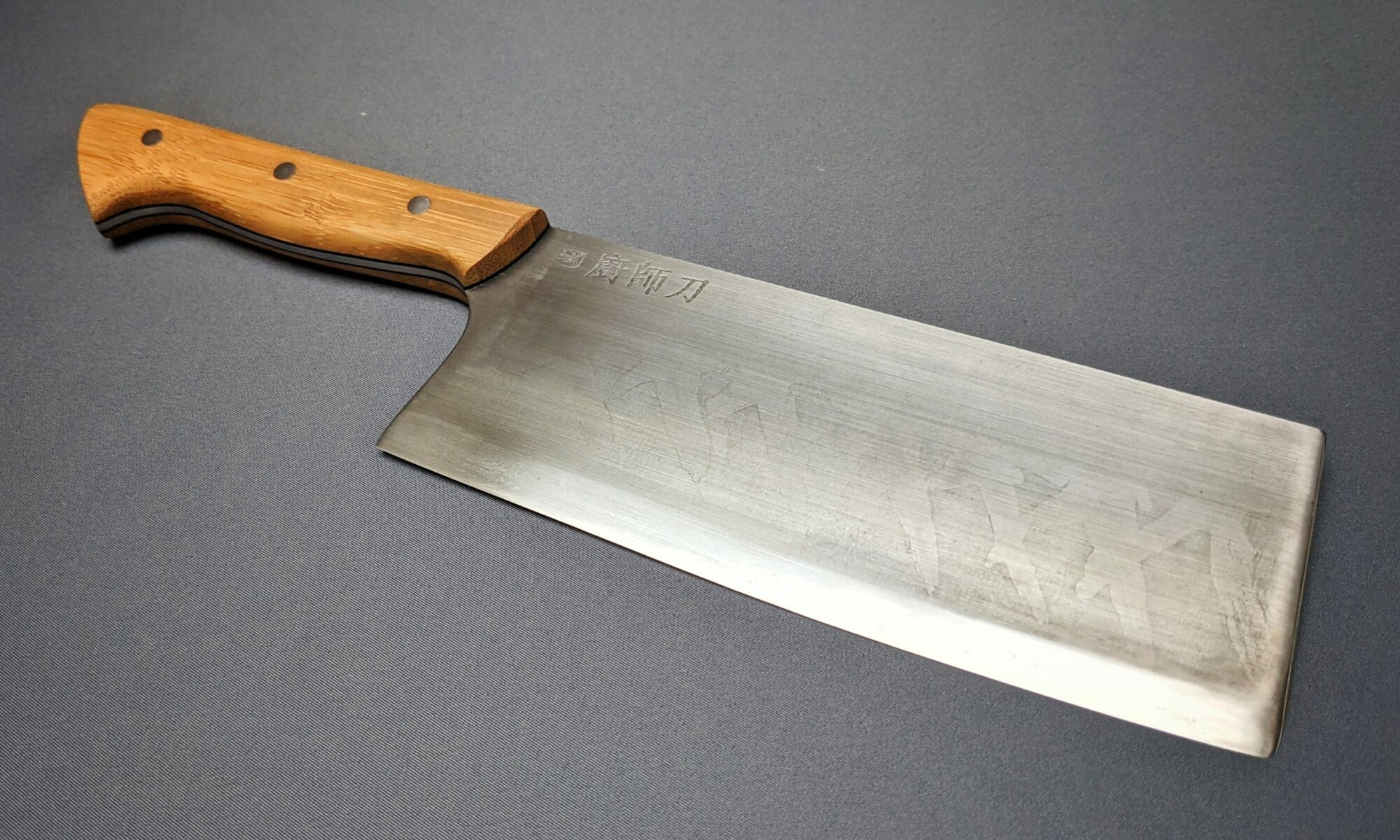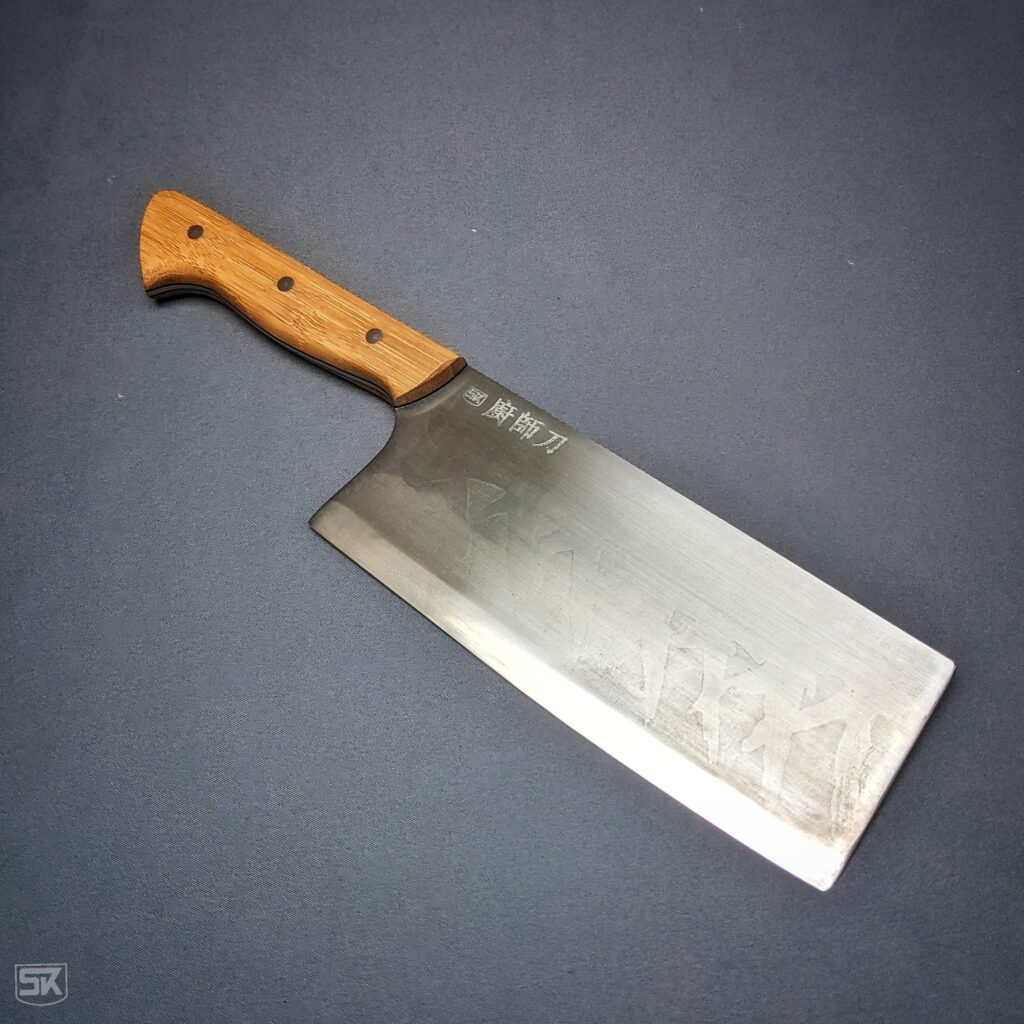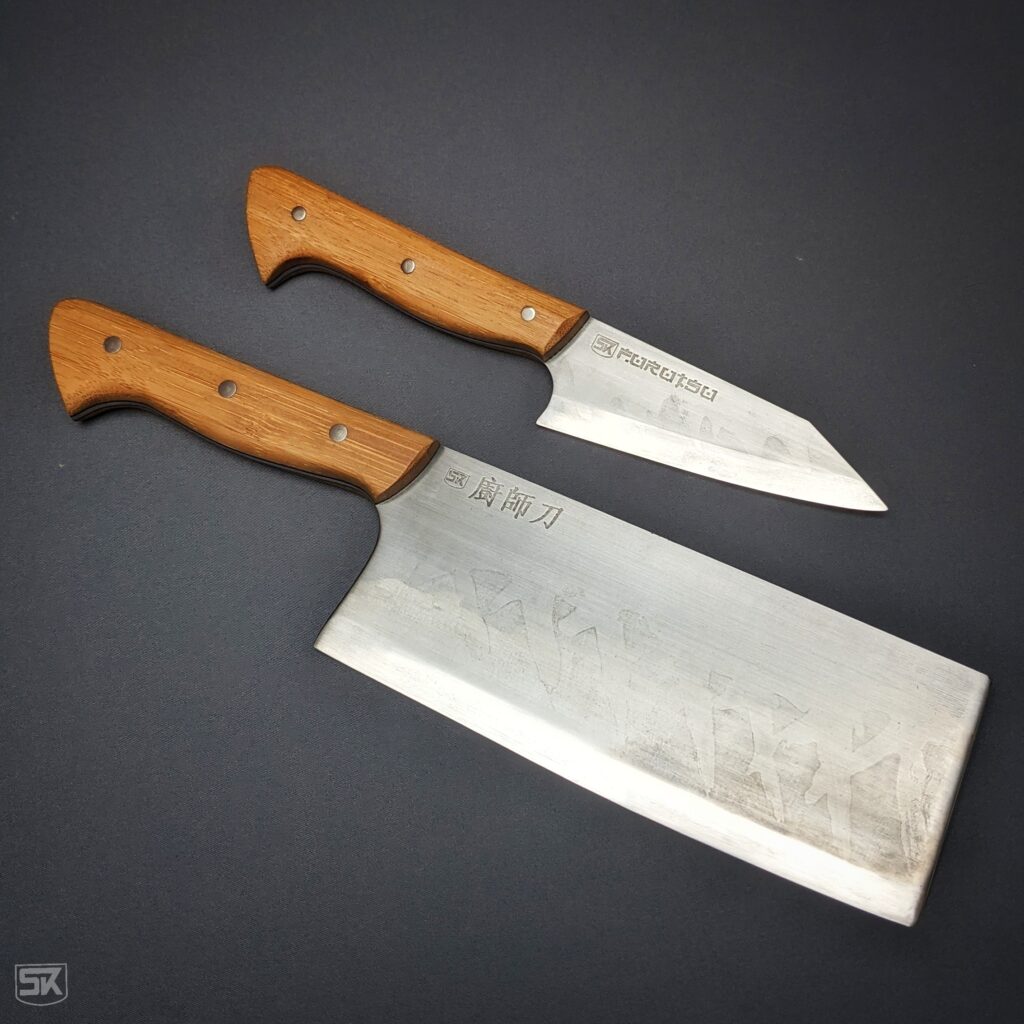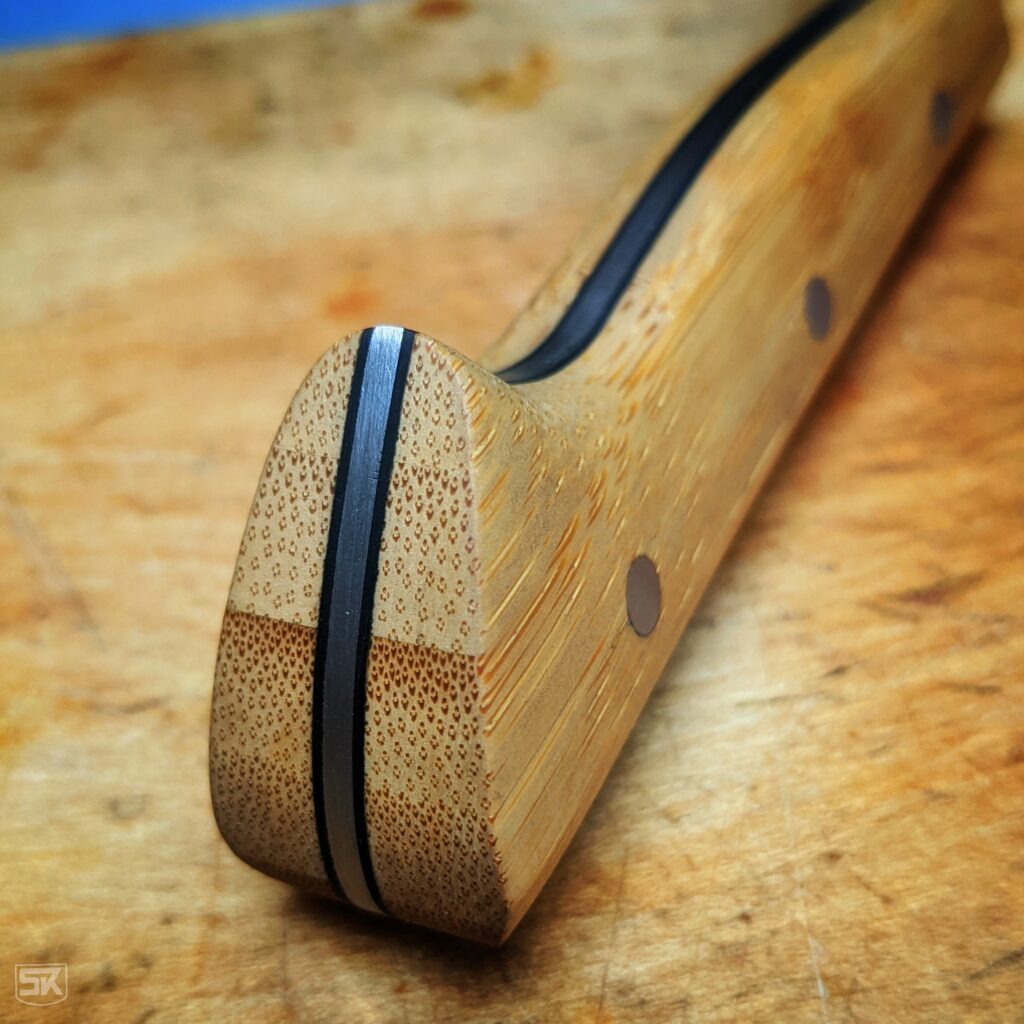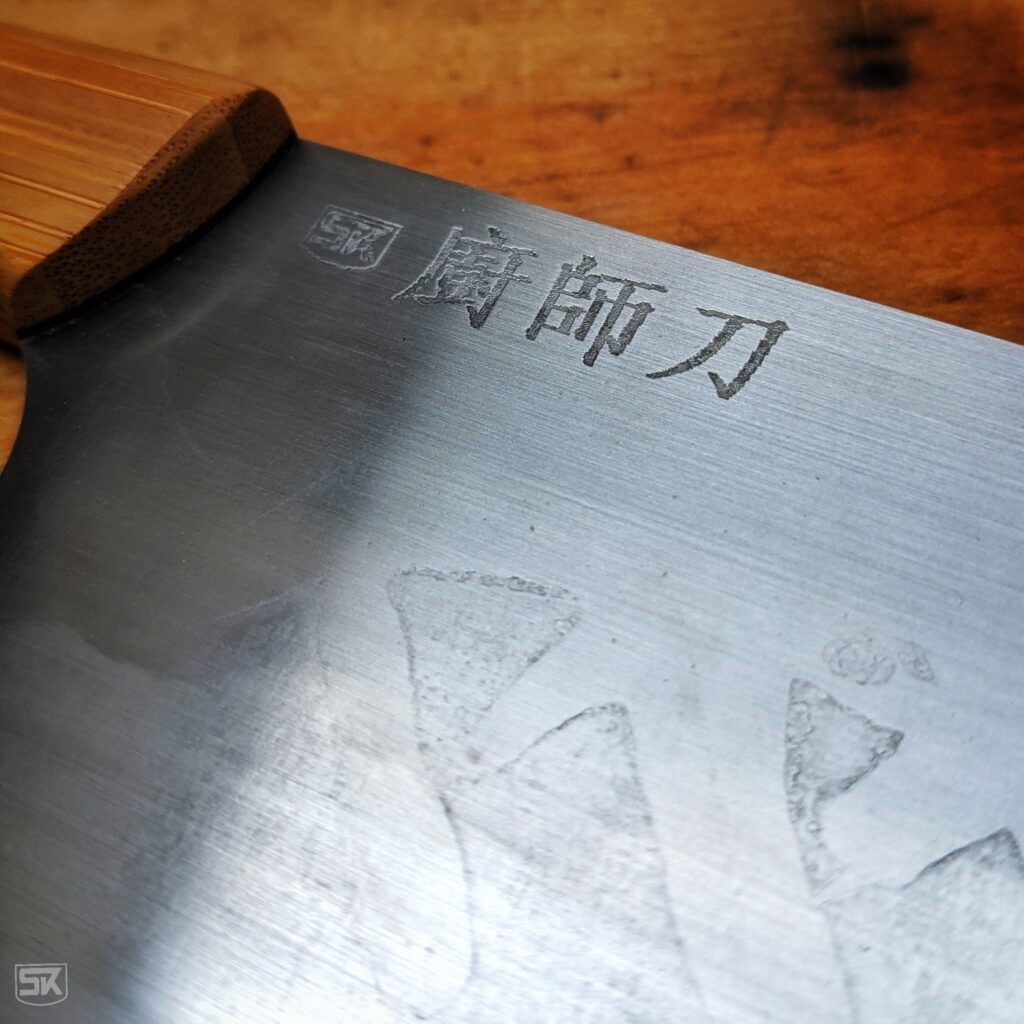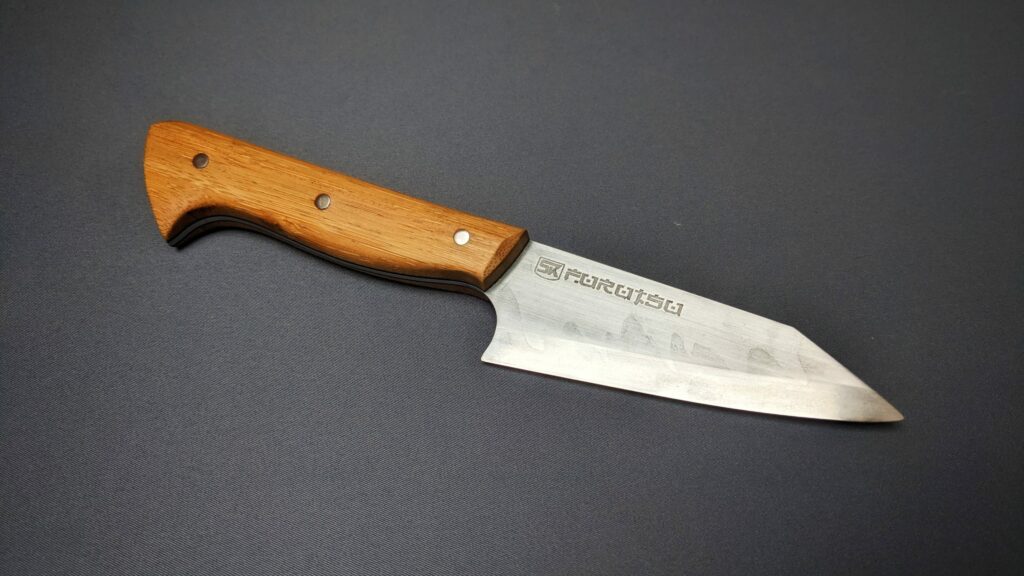I have recently finished more kitchen knives. I worked on another Japan-style Furutsu petty knife and a Chinese chef’s knife.
I used 2 mm O1 steel for these knives as this gives a good mix of stability, flexibility and thin enough to be highly sharpened. O1 is my favorite steel to work with.
On my last order of handle material, I changed the supplier and checked out some of his materials. I found that he offered bamboo handle scales and as I already planned to do Asian-style knives I found them to fit perfectly and got two sets. The bamboo is not a solid block but more layered or stacked. I still like it a lot.
My first tries to add a Hamon
I always try to learn something new – this time I wanted to experiment with creating selective hardness in the blades and a Hamon. A Hamon is a wavy line between the hardened part of the blade – the cutting edge – and the spine of the blade, where the steel stays softer. The advantage is, that the hardened blade is supported by a softer part of the blade which results in a more stable knife – and to be honest: it looks just super cool.
To create the Hamon I prepared the blades as usual and then I created a mix of ash and clay. The recipe for the exact mixtures is a secret that is passed from generation to generation in our family. The clay is left to dry. Then the blade is heated together with the clay mantle and hardened in the oil.
After hardening the clay is removed and the blade is tempered and then hand sanded to the desired grit and then etched in ferric chloride, then sanded again. I repeated the etching and sanding process multiple times to reach the desired look.
For my first try I am very happy with the result. Must be due to the secret clay recipe of our family 🙂
